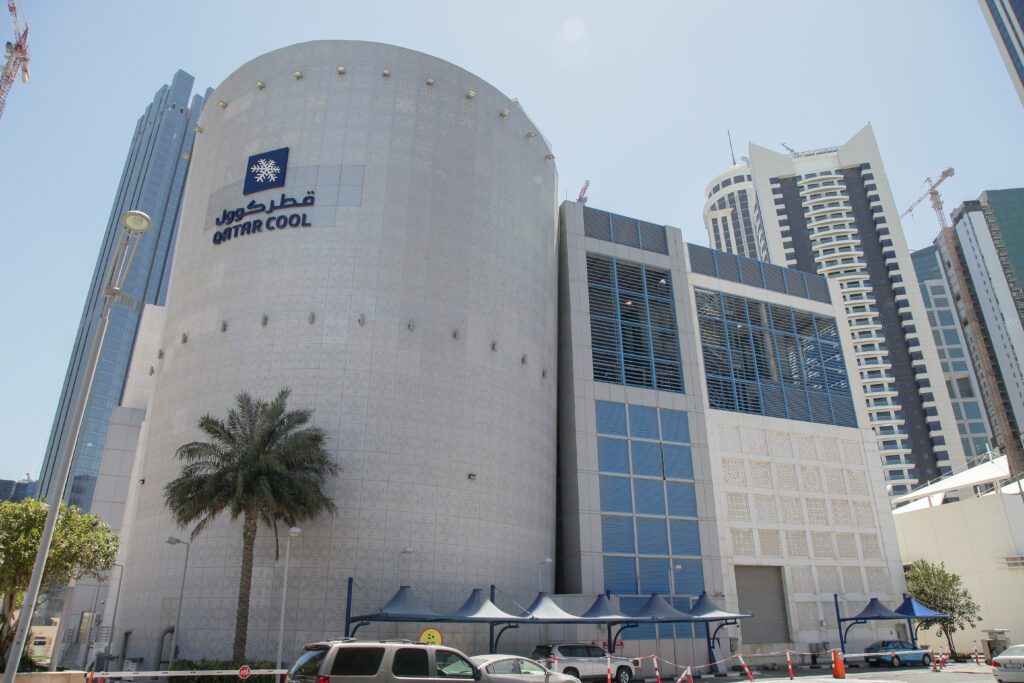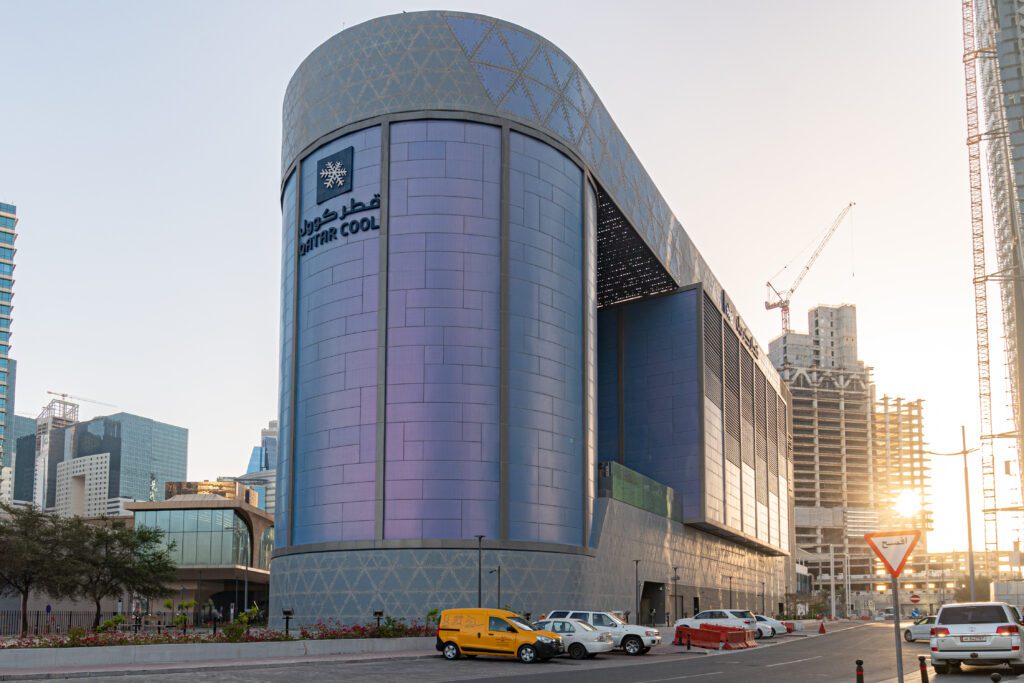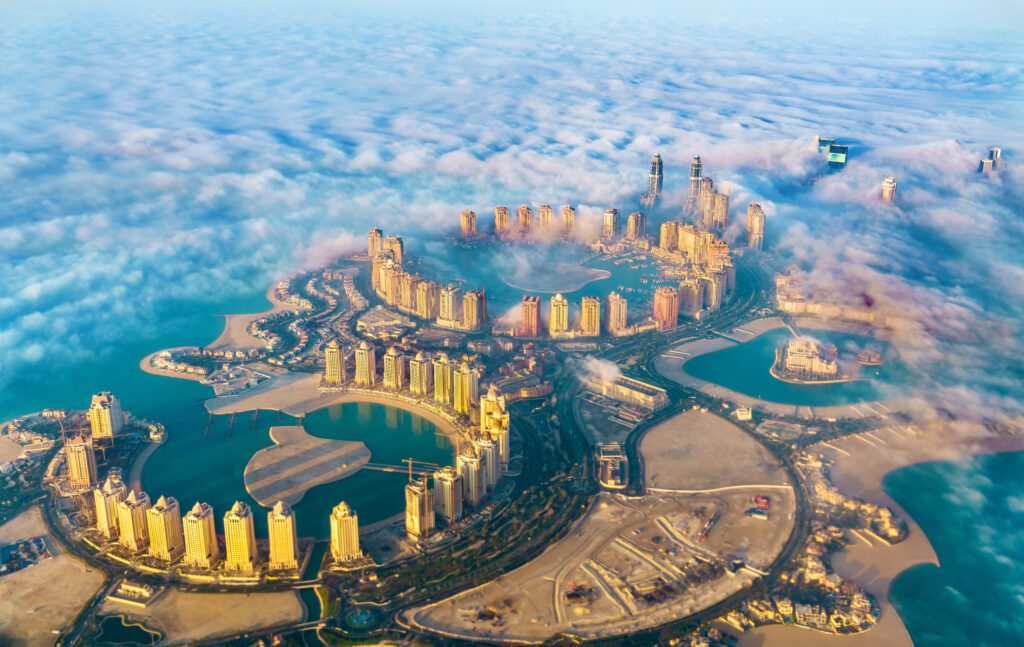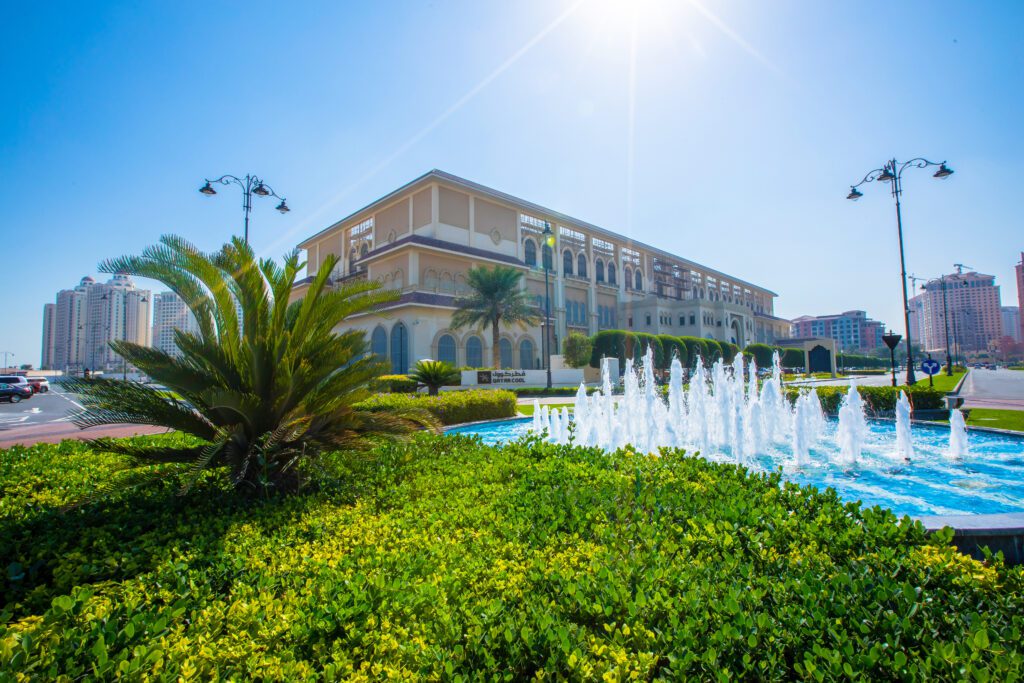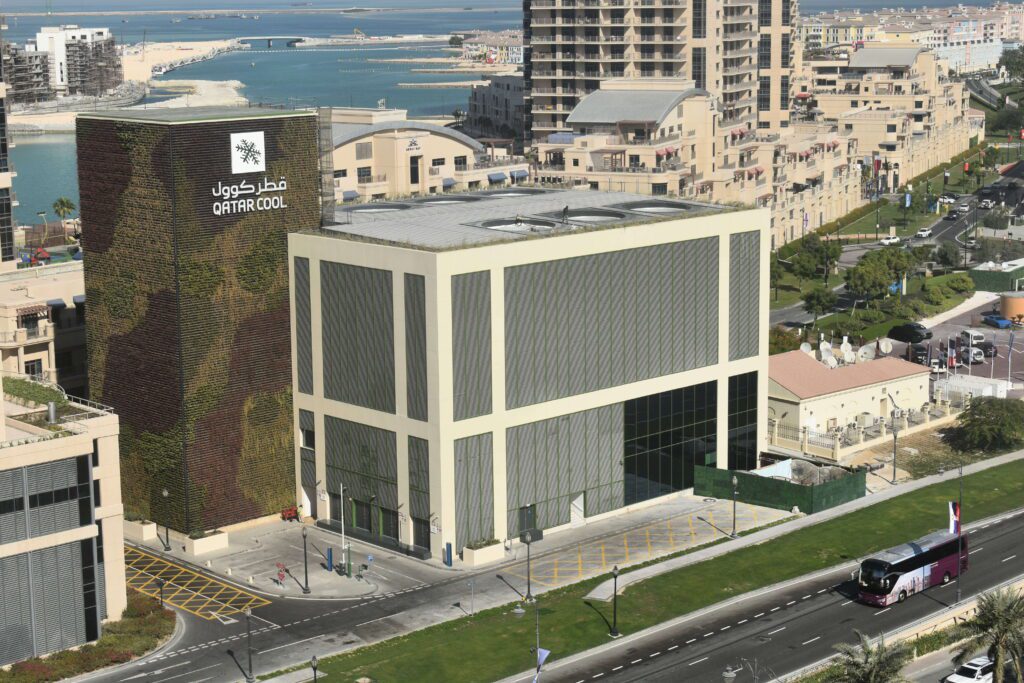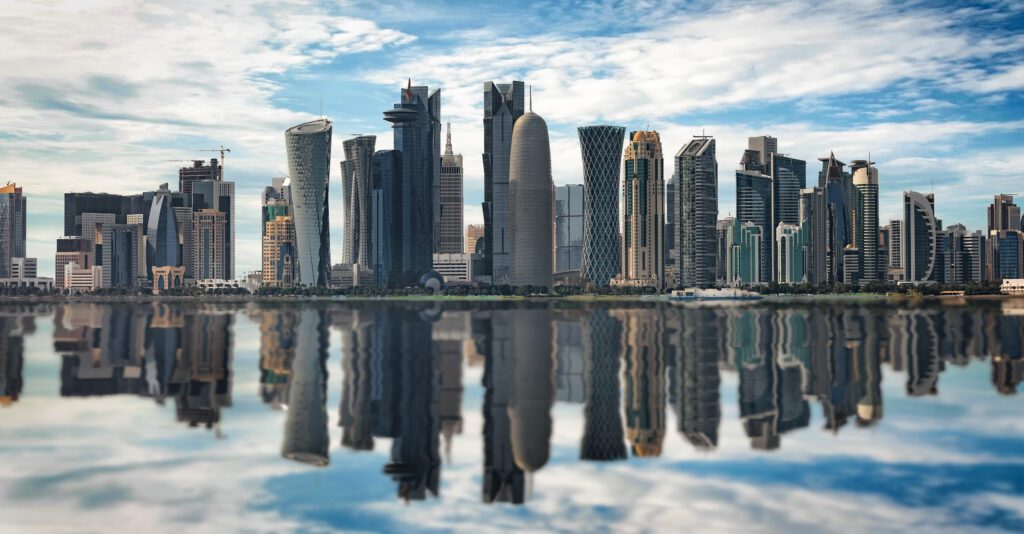
The West Bay District
The total area served is more than 1.9 million square meters (20 million square feet), the length of the Pipe Distribution Network (PDN) is 28 kilometres (17 miles) of underground supply and return pipelines with pre-insulated steel pipe. The three operational plants are connected to the network and currently serving over 69 towers of Doha’s West Bay skyline. Qatar Cool serves such towers as government offices, ministries, hotels, residential, commercial, metro, and retail complexes.
Qatar Cool has implemented TSE in all three cooling plants in the West Bay district, two of which receive direct TSE and the third via an onsite Reverse Osmosis (RO) plant. Since 2015 Qatar Cool has saved over 6 million m3 of potable water.


